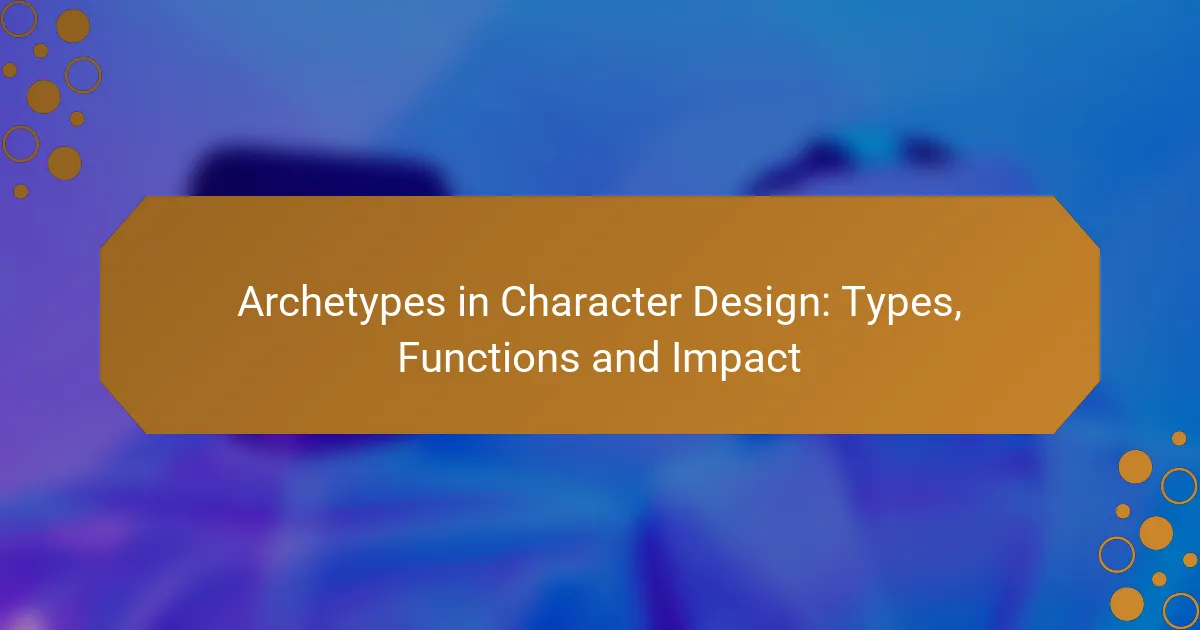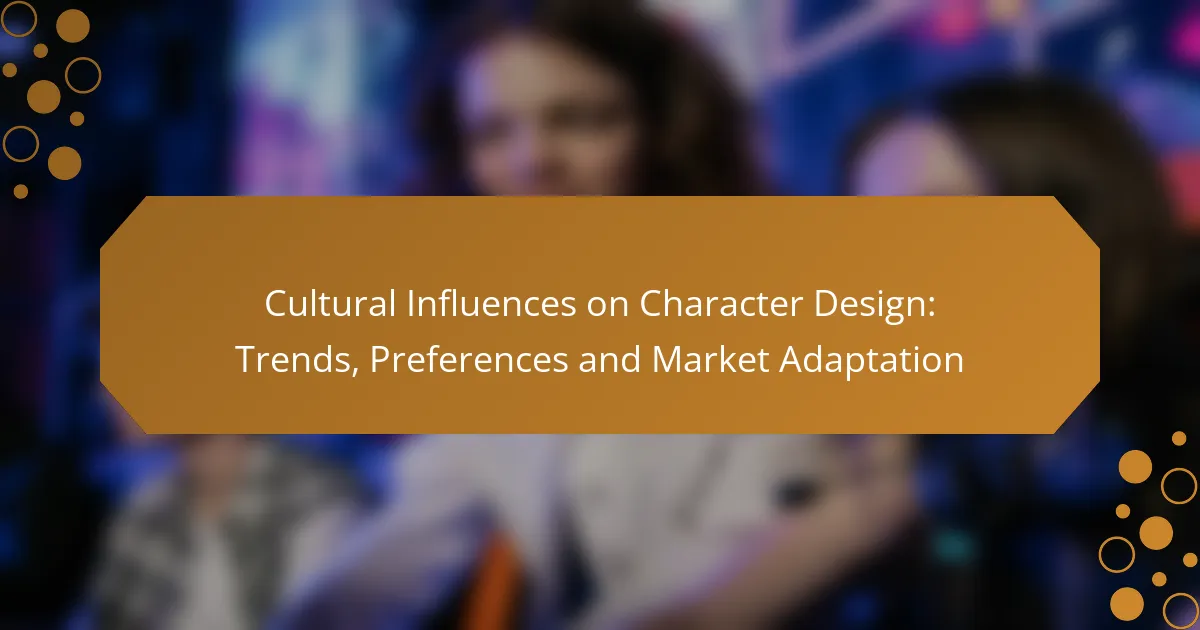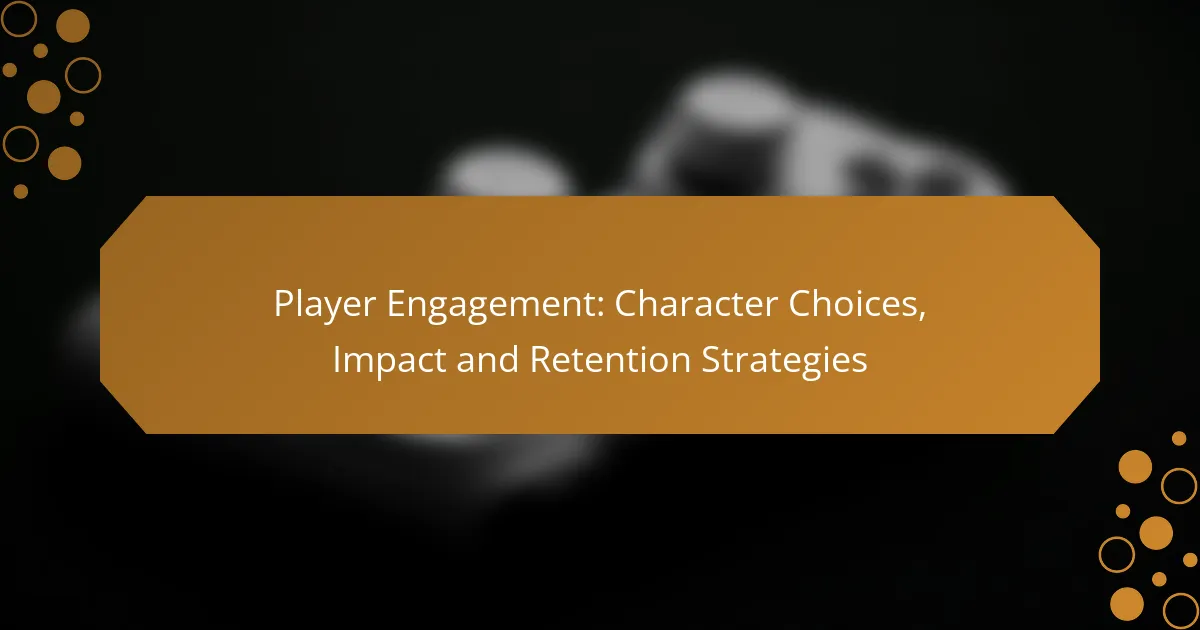Archetypes are essential in character design, offering recognizable templates that resonate with audiences and shape characters’ personalities and motivations. By representing universal patterns in storytelling, these archetypes facilitate emotional connections and enhance viewer engagement, allowing for a deeper understanding of character roles and plot dynamics.
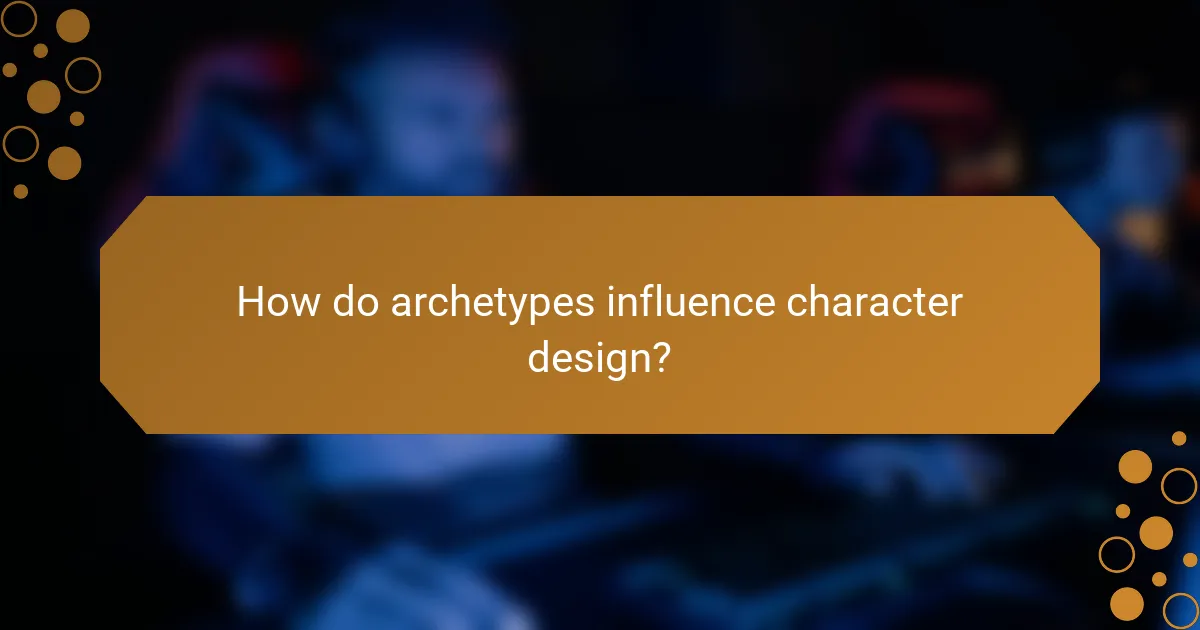
How do archetypes influence character design?
Archetypes play a crucial role in character design by providing recognizable templates that resonate with audiences. They help shape characters’ personalities, motivations, and roles within a story, making it easier for viewers to connect with them.
Establishing relatable characters
Using archetypes allows designers to create characters that audiences can easily identify with. For example, the “hero” archetype often embodies bravery and determination, traits that many people aspire to. By incorporating familiar characteristics, designers can foster an immediate emotional connection.
When developing relatable characters, consider blending archetypes to add complexity. A “mentor” character with a hidden past can evoke intrigue while still fulfilling the archetypal role of guidance. This depth enhances relatability and keeps the audience engaged.
Guiding audience expectations
Archetypes set clear expectations for character behavior and development. When audiences encounter a “villain,” they anticipate conflict and challenges, while a “sidekick” often provides comic relief and support. This predictability allows for smoother storytelling and pacing.
To effectively guide audience expectations, ensure that characters embody their archetypes consistently throughout the narrative. Deviating too far from established traits can confuse viewers and diminish their investment in the story.
Enhancing narrative depth
Archetypes contribute to narrative depth by allowing for layered storytelling. Characters can evolve beyond their initial archetypes, revealing hidden motivations or unexpected traits. For instance, a “trickster” may initially seem frivolous but can ultimately drive significant plot twists.
To enhance depth, consider how characters’ backgrounds and experiences shape their archetypal roles. A “warrior” with a tragic past can create a more compelling narrative, inviting audiences to explore themes of redemption or sacrifice. This complexity enriches the overall story experience.

What are the main types of character archetypes?
Character archetypes are fundamental types that represent universal patterns in storytelling. They serve specific functions and evoke particular emotions, making them essential in character design.
Hero archetype
The hero archetype embodies courage and determination, often facing challenges to achieve a significant goal. This character typically undergoes a journey that leads to personal growth and transformation.
Common examples of heroes include figures like Superman or Frodo Baggins. When designing a hero, consider traits such as bravery, resilience, and a strong moral compass to resonate with audiences.
Mentor archetype
The mentor archetype serves as a guide or teacher, providing wisdom and support to the hero. This character often has a wealth of experience and helps the hero navigate their journey.
Examples include characters like Gandalf or Mr. Miyagi. When creating a mentor, focus on attributes like patience, knowledge, and the ability to inspire, as they play a crucial role in the hero’s development.
Shadow archetype
The shadow archetype represents the darker aspects of a character or society, often embodying fear, conflict, or moral ambiguity. This character challenges the hero, forcing them to confront their own flaws and limitations.
Villains like Darth Vader or the Joker exemplify this archetype. When designing a shadow character, emphasize complexity and depth, allowing them to serve as a foil to the hero’s journey.
Trickster archetype
The trickster archetype is characterized by wit, humor, and a penchant for chaos. This character often disrupts the status quo, challenging norms and provoking thought through their actions.
Examples include characters like Loki or the Cheshire Cat. When incorporating a trickster, focus on their ability to create unexpected twists and engage audiences with clever dialogue and antics.

How do archetypes function in storytelling?
Archetypes serve as foundational templates in storytelling, providing recognizable patterns that guide character behavior and plot progression. They help audiences quickly understand character roles and motivations, enhancing engagement and comprehension.
Driving plot development
Archetypes significantly influence plot development by establishing clear roles that drive the narrative forward. For instance, the Hero archetype often embarks on a quest, facing challenges that propel the story and reveal conflicts. This structure allows writers to create compelling arcs that resonate with audiences.
Utilizing archetypes can streamline plot progression, as characters embody specific traits that dictate their actions. For example, the Mentor archetype typically guides the Hero, providing wisdom and support that shapes the journey. This dynamic fosters a predictable yet satisfying narrative flow.
Creating emotional connections
Archetypes foster emotional connections by tapping into universal human experiences and feelings. Characters like the Innocent or the Rebel evoke empathy, allowing audiences to relate to their struggles and triumphs. This relatability enhances viewer investment in the story.
Writers can deepen emotional engagement by developing archetypes with unique backstories and motivations. For example, a Villain archetype may have a tragic past that elicits sympathy, complicating the audience’s feelings toward them. This complexity enriches the emotional landscape of the narrative.
Facilitating character growth
Archetypes facilitate character growth by providing a framework for transformation throughout the story. Characters often start in a specific role, such as the Sidekick, and evolve into a more complex figure, like the Hero, by overcoming challenges. This journey of growth resonates with audiences seeking relatable character arcs.
To effectively utilize archetypes for character development, writers should ensure that characters face obstacles that challenge their inherent traits. For instance, a Hero may struggle with self-doubt, leading to personal growth and a more profound understanding of their role. This evolution not only enhances the character but also enriches the overall narrative.
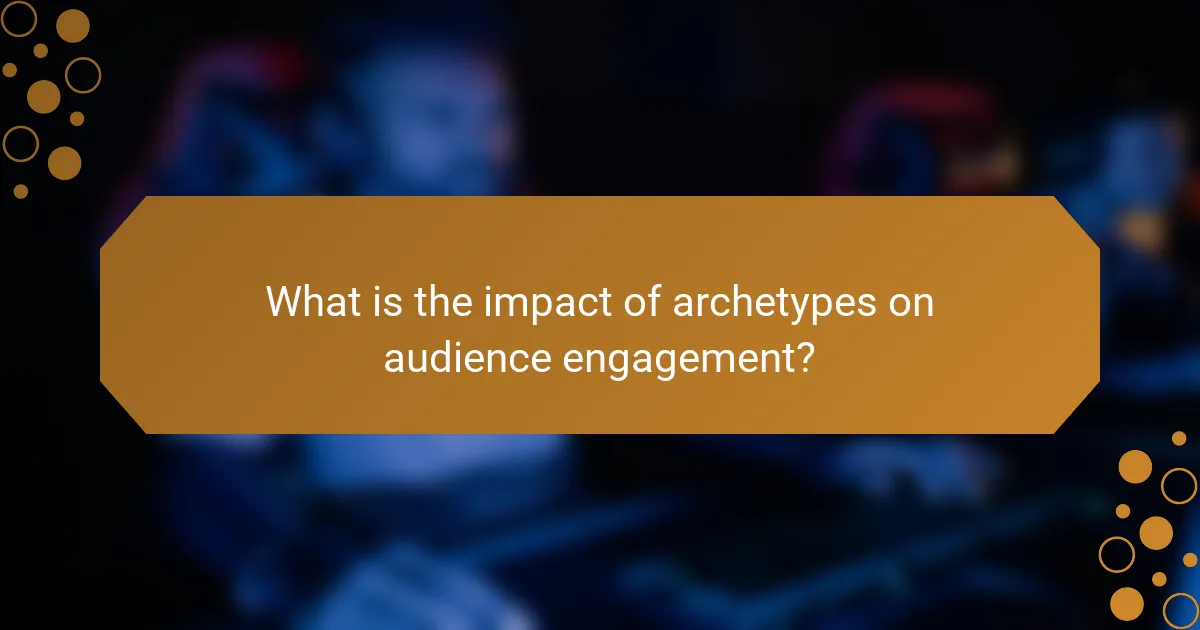
What is the impact of archetypes on audience engagement?
Archetypes significantly enhance audience engagement by creating familiar patterns that resonate emotionally. They help viewers connect with characters on a deeper level, fostering empathy and investment in the story.
Improving relatability
Archetypes improve relatability by embodying universal traits and experiences that audiences recognize. For instance, the “hero” archetype often represents courage and resilience, making it easy for viewers to see themselves in that character’s journey.
When characters reflect common human struggles, such as love, loss, or ambition, they become more accessible. This connection can lead to a stronger emotional response, encouraging audiences to engage more deeply with the narrative.
Enhancing memorability
Memorable characters often stem from well-defined archetypes that stick in the audience’s mind. For example, the “mentor” archetype, like Gandalf in “The Lord of the Rings,” provides wisdom and guidance, making them unforgettable figures in storytelling.
Using archetypes allows creators to craft distinctive personalities that stand out. This can be achieved through unique traits or quirks that align with the archetype, ensuring that characters remain vivid in the audience’s memory long after the story concludes.
Influencing viewer expectations
Archetypes shape viewer expectations by establishing a framework for how characters will behave. Audiences often anticipate certain actions or developments based on the archetype, such as expecting the “trickster” to introduce chaos or humor.
Understanding these expectations can help creators subvert them for dramatic effect, leading to surprising twists that enhance the narrative. However, it’s crucial to balance innovation with familiarity to maintain audience engagement without causing confusion.
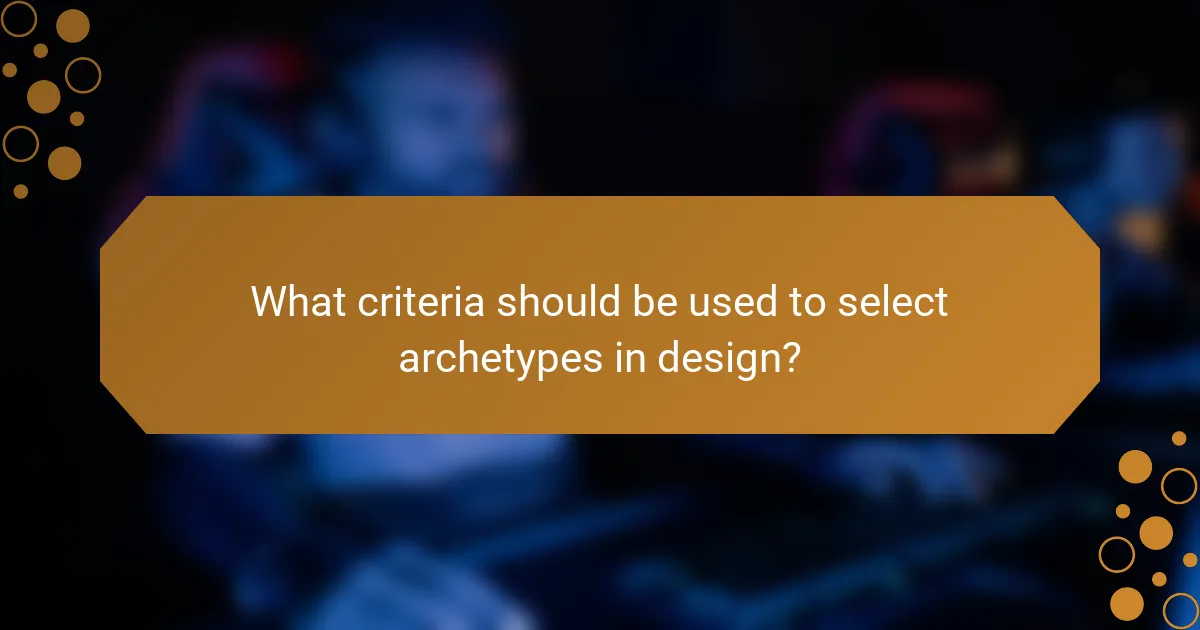
What criteria should be used to select archetypes in design?
Selecting archetypes in character design involves understanding the target audience, considering genre expectations, and aligning with narrative goals. These criteria help ensure that characters resonate with viewers and serve their intended purpose effectively.
Target audience analysis
Understanding your target audience is crucial for selecting appropriate archetypes. Consider demographics such as age, gender, cultural background, and interests, as these factors influence how characters are perceived. For example, a younger audience may respond better to dynamic, relatable heroes, while older viewers might appreciate more complex, nuanced characters.
Gather feedback through surveys or focus groups to refine your character choices. This can help identify which archetypes resonate most with your audience, ensuring that your design choices align with their preferences and expectations.
Genre considerations
Different genres have established archetypes that audiences expect. For instance, fantasy often features wizards, knights, and mythical creatures, while thrillers might focus on anti-heroes or morally ambiguous characters. Familiarity with these conventions can guide your design process and enhance audience engagement.
Be mindful of genre blending, as combining elements from different genres can create unique characters. However, ensure that the archetypes you choose still align with the overall tone and themes of the work to avoid confusing the audience.
Narrative goals
Your narrative goals should directly influence the archetypes you select. Determine what role each character plays in the story—whether they are protagonists, antagonists, or supporting characters—and choose archetypes that effectively fulfill these roles. For instance, a mentor archetype can provide guidance to the hero, while a trickster can introduce conflict and humor.
Consider how each archetype contributes to character development and plot progression. Ensure that the chosen archetypes not only fit the story but also allow for growth and transformation, making the characters more relatable and engaging for the audience.
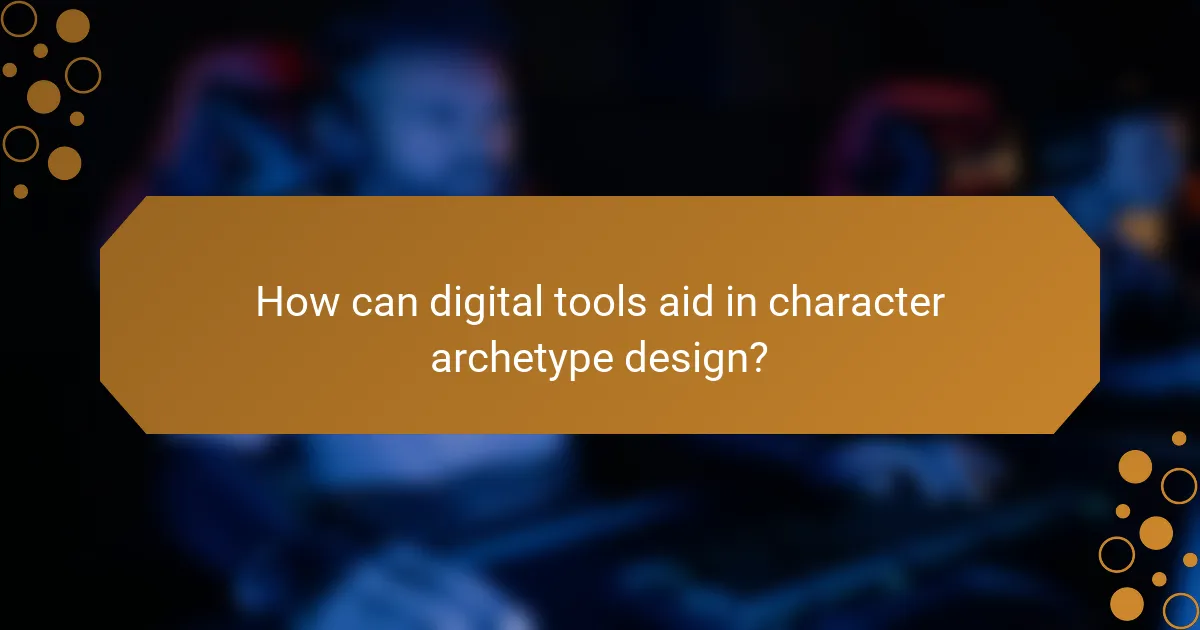
How can digital tools aid in character archetype design?
Digital tools significantly enhance character archetype design by providing artists with versatile platforms for creation and refinement. These tools streamline the design process, allowing for greater experimentation and precision in visualizing archetypes.
Using Adobe Illustrator for character creation
Adobe Illustrator is a powerful vector graphics editor ideal for creating detailed character designs. Its scalable graphics allow designers to manipulate shapes and colors easily, making it suitable for both 2D illustrations and character concepts.
When using Illustrator, focus on utilizing layers to separate different elements of your character, such as clothing, facial features, and accessories. This organization simplifies adjustments and enhances the overall design process.
Consider employing the pen tool for precise line work and the color palette for consistent character aesthetics. Avoid overcrowding your design with too many details; simplicity often leads to stronger archetypal representations.
Employing Blender for 3D modeling
Blender is an open-source 3D modeling software that excels in creating complex character models and animations. It offers a comprehensive suite of tools for sculpting, texturing, and rigging characters, making it a favorite among game developers and animators.
When modeling in Blender, start with basic shapes and gradually refine them into your character archetype. Utilize the sculpting tools to add intricate details, and remember to keep your topology clean for smoother animations.
For effective character design, consider using Blender’s UV mapping features to apply textures accurately. Avoid excessive polygon counts, as they can hinder performance; aim for a balance between detail and efficiency in your models.
